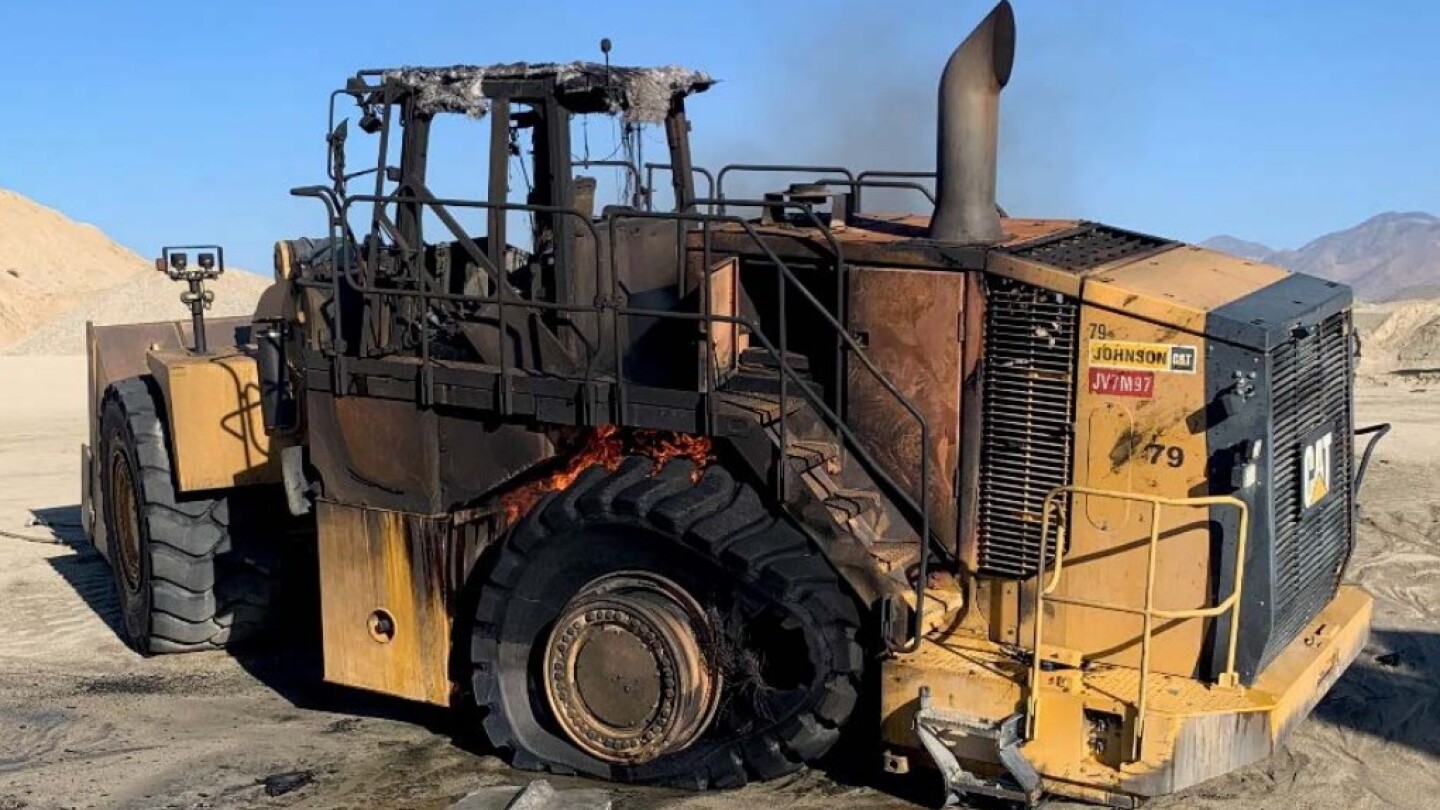By Bill CareyFireRescue1
LOS ANGELES COUNTY, Calif. — On June 14, 2024, Los Angeles County firefighters responded to a vehicle fire at a Palmdale quarry. The first engine arrived and began extinguishing a front-loader when a tire exploded, killing one firefighter and injuring another.
The department released a summary report providing details of the incident.
Engine 93 arrived and Firefighter 1 (the victim), fully equipped with PPE, SCBA and on air, exited the fire engine and used a right-side 1″ reel line to attack the fire on the loader’s left side.
Firefighter 2 (the injured firefighter), fully equipped with PPE, SCBA and on air, exited the fire engine and used a left-side 1″ reel line to attack the fire on the loader’s right side.
Firefighters 1 and 2 began dousing the burning engine compartment and rear tires. The Engine 93 captain checked their progress on both sides. Engine 92 arrived and its crew joined the fire attack and water supply efforts.
Shortly after Engine 92 arrived on scene, the left rear tire of the burning vehicle exploded. The force of the explosion expelled debris up to 350 feet. Firefighter 1 was positioned near the left-rear tire at the time of the explosion. The Engine 93 captain and Firefighter 2 were on the right side of the wheel loader and were shielded from the blast.
Los Angeles County Fire Department
The department’s Serious Incident Review Team (SIRT) investigated the fire hazards associated with large vehicle tires. While the risks during installation, inflation and maintenance are well-documented in the vehicle industry, there is limited fire service information on the effects of fire on this type of tire.
The SIRT investigation listed recommendations for large vehicle fire incidents based on their findings:
Situation Awareness: Upon recognizing a fire involving a large vehicle, determine which hazards are present from a safe location. Establish the incident priority: life, environment, or property.Hazard Assessment: Assess the conditions to determine which hazard(s) (compressed natural gas, liquified natural gas, hydrogen, lithium-ion batteries, tires exposed to fire, etc.) are present. Information sources include placards, fire conditions, reports from vehicle operators, etc.Hazard Control: Develop your plan by determining the appropriate and available hazard control(s) (distance, approach angle, etc.) and mitigation strategies. The incident priority, specifically life, will dictate the appropriate level of risk.Decision Point: Validate the plan, brief personnel, and engage.Evaluate: Observe progress and changes and reassess strategy if necessary.
EA-320a by epraetorian on Scribd
EA – 322a by epraetorian on Scribd
Trending



